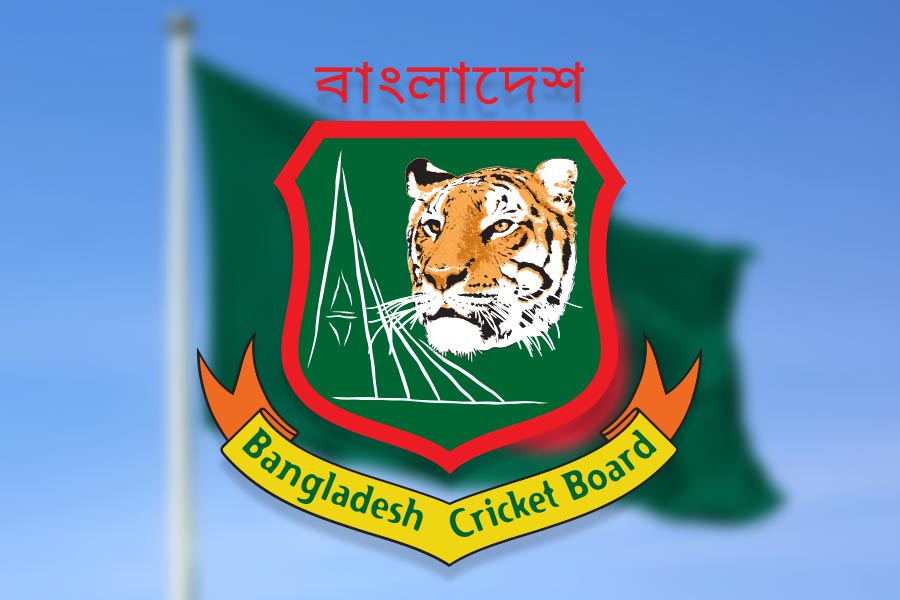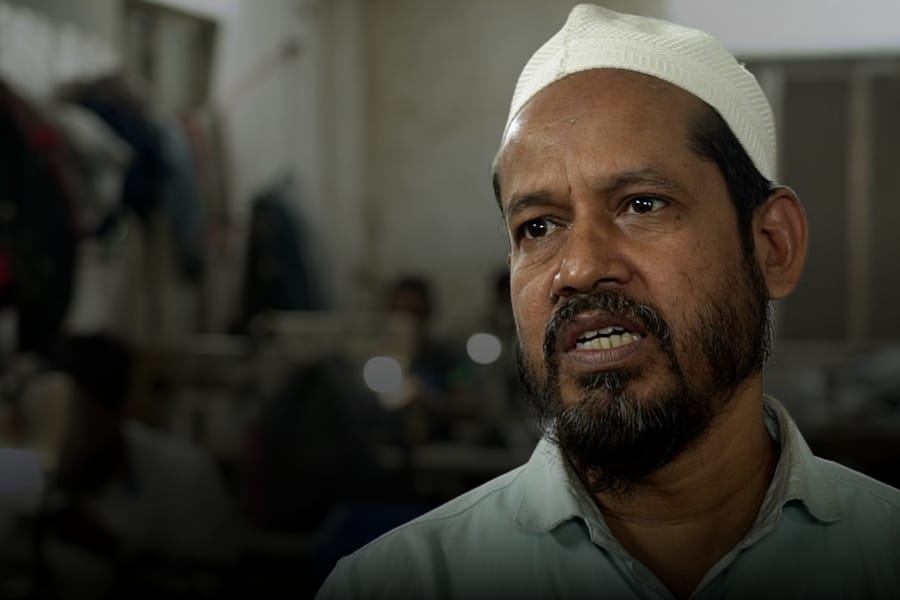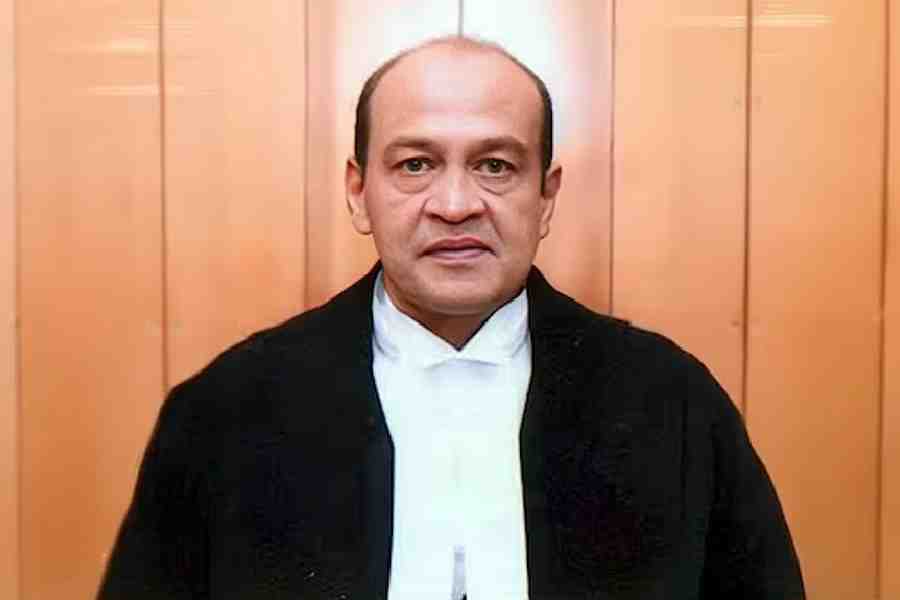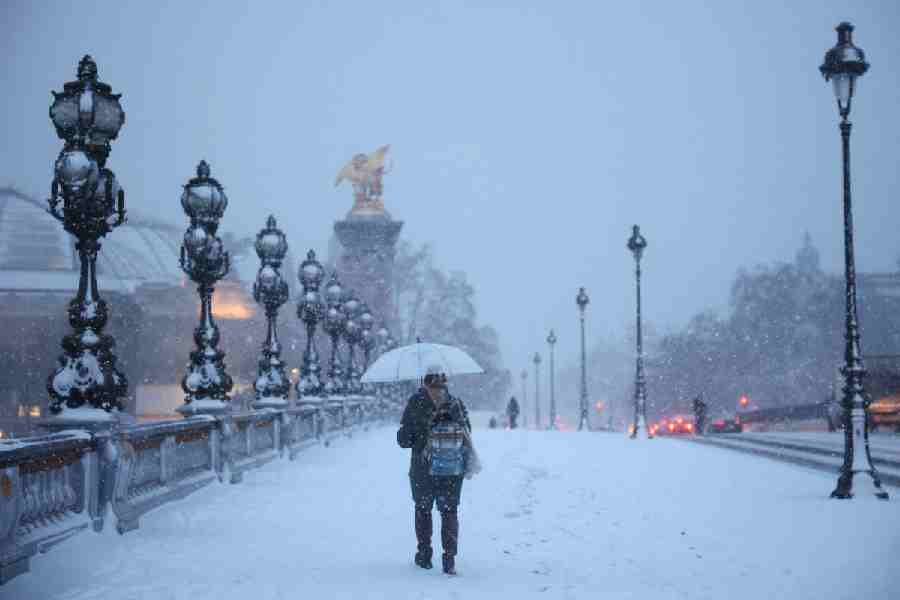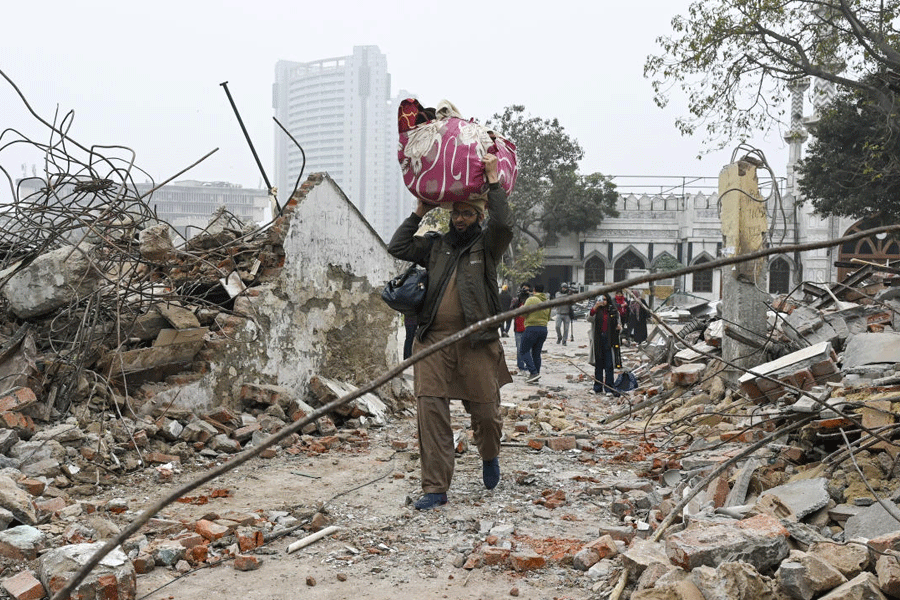 |
What’s your take on polo?” I was asked almost as soon as I walked into office last Monday. “Err… the mint with the hole…?” I mumbled.
That sealed my fate. I had to learn everything about polo the sport — the history, the geography, the rules, the nuances, the players and the ponies.
All this before December 17, the start of the Calcutta Polo Season, organised by the Fort William Riding and Polo Club in association with The Telegraph.
First stop, Lt-Col Shakti Rathore at the Ballygunge army camp, who briefed me about the game of chukkers (see box below). Each team has four players, No. 1 and No. 2 are forwards, No. 3 is the pivot and No. 4 plays back. It’s No. 3 who controls the game in terms of movement. The players can be identified by numbers printed on their tees. There is no goalkeeper and there’s no restriction on how high one can hit the ball while scoring.
A passionate player, Rathore has a +2 handicap and will represent the Army Service Corps team at the upcoming polo season.
“A handicap roughly translates into how many goals you are worth to your team. Every player is adjudged on the basis of effective play, stickwork, riding ability and sense of anticipation by a four-member panel at the beginning of each season,” Rathore explained.
The ranking starts from -2 and goes up to +10. So, unlike in golf, where the lower the handicap better the golfer, here a handicap is actually an “advantage”, I realised.
The game has many such quirks, the most obvious one being that full-grown horses are called ponies, a legacy from the Manipuri avatar of the game, which is played on shorter ponies.
To really appreciate the game, I must mount a pony and try my hand at polo, Rathore suggested.
GET SET, GO…
So, two days before the start of the season — also the first winter morning in 2010 — I cajoled myself out of my quilt at an unearthly hour and reached the Pat Williamson Polo Grounds on the Maidan for a morning practice session.
With Victoria Memorial behind us and the mild morning sun on our shoulders, Rathore took me through the polo equipment and gear. The stick is called a mallet, made from cane and between 51 and 53 inches long. A player will choose his mallet depending on the height of his pony and his reach. (In the fitness of things, I’d need a 60-inch mallet to reach the ball, I was sure!) The head of the mallet is fashioned out of tipa wood. The ball is white, made from bamboo root and must weigh between 130 and 135 grams.
The gear includes polo helmet, polo boots, knee guards, riding breeches and the polo whip. This is longer than a riding crop and is used to touch the horse’s hindquarters to control it. Excessive use of the whip amounts to a foul during a match.
We then went over to the ponies. In polo parlance, there’s no black, white or brown. The ponies are “dark bay”, “grey” or “chestnut”. Each was padded knee-down to guard against injury. I was suitably impressed to find the bandages colour-coordinated with their skin tones. Their manes in a short crop and tails in, well, a ponytail with a knot, customised bits in their mouth, the animals looked as ready for speed as their riders. How their coats gleamed in the December sun.
I met Deepshikha, a Calcutta girl working in the tea industry and a keen polo player. All geared up, Rathore, Deepshikha and two others set off for a session.
Then it sunk in: I was standing there in the middle of Pat Williamson, the oldest active ground for modern polo in the world. The ground is 300 yards in length and 180 yards in width, when bordered. The goal posts are 12 yards apart, and make of wicker cane.
The riders mounted their steed with as much ease as you and I would climb into bed and galloped off, reins in one hand, mallet in another. They stroked the ball high up in the air, vied with each other for control, almost came crashing into each other ever so often, (almost being the operative word), and scored goal after goal.
I was particularly fascinated with the backhand shot, where a rider hits the ball with a reverse sweep before turning the horse and chasing the ball again. I couldn’t wait to try it.
MIST AND ME
Practice over, Rathore dismounted and offered me his pony. Mist, a nine-year-old chestnut mare, who’s been playing the game for the past five years. Donning a red polo helmet, I walked towards Mist. “Never walk behind a horse,” came the first piece of advice from the groom holding the reins.
I wanted to bond with the pony before I placed myself on her shoulders but didn’t even know how to do that. “Pat her on the neck,” Rathore showed me how. Mist felt warm, a thin film of sweat on her coat mirroring the grind a pony goes through on the ground. No wonder each player needs four to six ponies per match. That’s 32 ponies and more for two teams!
I was asked to place my left leg on one stirrup and haul myself up with the other leg. Easy enough, except that the stirrup in question was neck-high for me! I somehow managed, mentally kicking myself for absconding from my gym for the past six months. I landed on horseback after a generous leg-up from the groom and held on to the saddle for dear life. As Mist got frisky, possibly irritated at the greenhorn rider, the groom held her tight.
Too scared of what cue I would end up giving the pony, I didn’t dare touch the reins. Rathore showed me how to hold two ends of the reins with two fingers of the left hand and another two with the rest of my fingers. Then came the polo whip, also to be held in the left hand!
In the right hand I held the mallet, which given my predicament, felt like a deadweight. Placing a ball just below my right foot (called the offside), Rathore asked me to shoot. I thought he was joking. There’s no way I would reach the ball, even with the longest mallet in the world.
“You have to bend down and hit the ball,” suggested Deepshikha.
I felt renewed respect for the young lady. Bending down as much as my torso would allow, I touched stick to ball and hit hard. The ball rolled along a few inches, almost reluctantly.
I felt so proud of myself. But that was short-lived: till I realised that I had completely forgotten about the reins in my other hand.
One needs two, possibly three, brains to play polo, I concluded.
I must admit I fall woefully short.
 |
There’s something about sitting under a warm December sun and watching a fast-paced game of brain and brawn being played out. And if that sport brings with it tall, toned gentlemen and sinewy horses playing in perfect harmony, well, it’s a feast for the mind — and the eyes.
As the city gears up for a royal welcome to the “king of games and the game for kings” for Calcutta Polo Season 2010 — organised by the Fort William Riding & Polo Club on behalf of Headquarters Eastern Command, in association with The Telegraph (December 17 to 25) — one feels proud to know that polo is considered India’s gift to the world. The world “pulu” in Sanskrit means “ball”.
And Calcutta should feel an extra dash of pride since polo as we know it started out in this very city. It has the oldest active polo club — Calcutta Polo Club, founded in 1862 — and the oldest polo ground in the world still in use — the Pat Williamson Ground on the Maidan — where every polo player worth his mallet wants to play, at least once.
AKBAR-NAMA
History books say polo flourished in Mughal times and Emperor Akbar was the first in the blue-blooded line of men to have patronised the game. Polo was then a free-for-all sport that posed a severe threat of injury to both rider and animal. Akbar set rules for the game, which was called Chaugan (meaning “stick” in Persian). There’s even a playing field in Jaipur called Chaugan Stadium. There have been accounts of polo being played from Gilgit (western India, now in Pakistan) to Ladakh in the north and Manipur in the Northeast.
MADE IN MANIPUR
 |
 |
| (Top) The Calcutta Polo Club team of 1864-65; polo at the 1936 Berlin Olympics, where India won gold |
But it’s the British officers and tea planters who brought the game from Manipur to Calcutta who should be credited with scripting the fate of modern polo. The game, called Sagol Kangjei in Manipuri parlance, was introduced to British army officers at Silchar in Cachar by the then Maharaja of Manipur, Chandrakriti Singh, around the 1850s.
LOCAL TO GLOBAL
In 1862, the Calcutta Polo Club was founded by Captain Robert Stewart and Major-General Joe Shearer. During the Christmas Race week that year, polo was played in public for the first time in Calcutta. The game was then carried to England, first by the 10th Hussars of Aldershot, Hampshire. Then it spread to the rest of the world. A set of rules, handwritten on the 10th Hussars stationery, was drawn up in 1870. Ever since, the army has been closely linked with the game.
Polo became an Olympic sport in the Summer Games in 1900 and continued till the 1936 Berlin Olympics, when India won gold. But the two World Wars set polo back, particularly the Second World War, when mechanisation of warfare led to the diminishing of the prominence of mounted cavalry. Today, only India has an active cavalry regiment.
Despite the hurdles, polo moved from strength to strength in India and the world, with countries like Argentina throwing up the best in the business. In the subcontinent, the rulers of the princely states under British India took up the mallet and polo became a royal sport, once again.
INDIA SHINING
The first Indian team to make its mark overseas was from the former princely state of Bikaner, captained by its ruler, Maharaja Ganga Singh. This team was followed by those from Ratlam, Patiala and Jodhpur. In 1933, the Jaipur team comprising Prince Prithi Singh, Rao Raja Abhay Singh, Rao Raja Hanut Singh and the Maharaja of Jaipur (with a record +10 handicap) visited England. They won every tournament they played, their feat prompting English cartoonist The Tout to sketch the Jaipur team mounted on an elephant and the British team running scared. The caption read: A Jaipur Allegory — Look Out, the Elephant’s coming.
Partition and the abolition of princely states was a body blow to the game. Some of the best players and stud farms along with several polo centres went to Pakistan. And many princely patrons of the game in India could not simply afford to play it any longer. But the Indian Army’s prominence remained intact. In fact, the 61st Cavalry regiment was formed, drawing the best from the cavalries of the former princely states. The regiment will be one of the teams to look out for during the upcoming Calcutta season, comprising three of the four members of polo’s Team India.
YESTERDAY ONCE MORE
Polo has brought to the city not just legendary players like Rao Raja Hanut Singh (+9 handicap) Maharaja Prem Singh and Brig. V.P. Singh (both +7), the captain of the English polo team, Peter Webb, and Argentinians like Ramiro Garos and Pablo Jeuratshe.
Bharat Dev Burman (better known as Habi), the nephew of Maharani Gayatri Devi and the husband of Moon Moon Sen, says it as he saw it back in the 1970s. “Watching the best players in the world battling it out on the polo grounds here used to be the best part of the Calcutta winter. It was a great sporting and social event.”
That was then. Now, from December 17, Calcutta Polo Season 2010 swings into action at the Pat Williamson Polo Grounds with The Rising Sun Polo Tournament, the Fort William Challenge Polo Tournament and exhibition matches. The crowning glory? The Army Commander’s Cup on December 25.
Post-match, the action shifts to nighclubs, pubs and star hotels.
Be there, for a blast from the past and a glimpse of the future.
MATCH POINTS
 |
| The game starts with the ball being thrown into the middle of the ground by a special guest or an umpire. Though plastic balls are in use, Calcutta Polo Season uses the wooden ball to keep the tradition. The balls are made in a village near the city, Deulpur |
 |
| The bit is very important for polo ponies since the game depends largely on the split-second reaction of the animals. Polo bits are heavier than the ones used for race horses |
A match is of four or six rounds, called chukkers. Each chukker has seven minutes of play time, with three and five-minute breaks in between.
Two mounted umpires follow the game closely.
To ensure that a strong team doesn’t walk away with all the trophies, the handicaps of all the players of a team are added and compared with the other team’s total. The weaker side starts the game with as many goals as the difference in handicap.
Goalposts are alternated after each goal to ensure that one team doesn’t get the advantage of an easier side of the ground.
Only dark tan boots and white breeches are allowed during a tournament
MOON MOON SEN ON A TRIP DOWN POLO MEMORY LANE
I only went to the polo ground after I met my husband, in the late 1970s.
Habi used to take me along… and his aunt (Maharani Gayatri Devi) used to be there.
That was the time there was always a smattering of royalty in polo. It was called king of games and the game for kings.
Maharani Gayatri Devi loved being part of the polo season because her husband (Maharaja Man Singh of Jaipur) was among the best players in the country and then her sons and nephews also played it.
Polo was very, very important on Calcutta’s winter calendar. The best of ponies, the best of players — and their glamorous girlfriends —would come here from around the world. The flavour was so international. And there was such a significant and stylish crowd of expatriates.
We would all dress up to show ourselves off — the polo crowd was even more glamorous than the one at the races.
The matches would be followed by parties in the evening. We’d rush here, rush there.
That entire thing is gone from Calcutta.
Delhi and Jaipur now come close to what Calcutta used to be.
We have a very beautiful polo ground, with Victoria Memorial as the backdrop.
Can polo make a comeback in Calcutta? I wait and wonder.
What can be done to revive the glory days of polo in Calcutta? Tell t2@abpmail.com


